Inhibitors
Inhibitor refers to substance that can hinder the chemical reactions, biological reactions (including immune response) and biological activity. In present time, commonly used inhibitors include immunosuppressants and inhibitors.
1. Immunosuppressive agents: immunosuppressants system refers to drug that can reduce the immune response. It can selectively suppress certain steps of the immune response and immune cells. Immune response refers to the body’s response to a variety of pathogenic substances. Some reactions are favorable to the body and can enhance the body's resistance to disease; some have adverse effects on the body and can cause tissue damage or disorders of physiological functions (allergy). Therefore, patients suffering from allergic reactions being harmful to the body should be subject to the treatment of immunosuppressant to affect the related immune processes and reduce the immune response of the body.
For the treatment of various autoimmune diseases and weakening the tissue incompatibility, it has been developed of a variety of immunosuppressive agents, some of which have been widely used in clinical practice. Commonly used immunosuppressants include glucocorticoids (prednisone, prednisolone, etc.), alkylating agents (nitric oxide mustard, cyclophosphamide, thiotepa, busulfan, etc.), and antimetabolites (6- mercaptopurine, azathioprine, methotrexate, etc.).
The mechanism of immunosuppressants, though not entirely clear, but is characterized by the following several aspects:
① most kinds of immunosuppressants can simultaneously inhibit cellular and humoral immunity and can be used for organ transplantation and autoimmune disease.
②Its inhibitory effect is strong for the primary immune response while the inhibitory effect against secondary response is weak.
③It can simultaneously act on normal and pathological immunity, therefore, can often lead to some complications.
④These drugs often have strong with serious adverse reactions.
2. Enzyme inhibitors: Enzyme inhibitors refer to compounds or drugs being capable of binding to enzyme and inhibit the enzymatic activity. It is clinically often applied of enzyme inhibitors to specially interfere with certain metabolic system to achieve the therapeutic purposes. For example, people use monoamine oxidase inhibitors as antidepressants; use carbonic anhydrase inhibitors as diuretics; use dopa decarboxylase inhibitors as antihypertensive drugs and use antibiotics such as penicillin, cephalosporins belonging to cell wall synthesis inhibitors. Enzyme inhibitors have applications in veterinary medicine and agriculture. In addition, people can also apply enzyme inhibitors to study the mechanism of the enzyme and metabolic pathways.
Enzyme inhibitors often have similar structure with their natural substrates. For designing the inhibitors according modification of natural substrate, people should first analyze and decide the function of each part of the molecule in binding with enzymes: for binding or not binding or repulsion; secondly, people should know the degree of tolerance of the binding site to the adjacent steric hindrance. Then people can replace each functional group to regulate the strength of interaction with the enzyme.
Inhibitors can be divided into reversible and irreversible, two classes. (1)Inhibitors binding with enzyme through non-covalent bonds are called reversible inhibitor. (2)Inhibitors binding to the enzyme via a covalent bond are irreversible inhibitors with strong binding affinity. They will not be affected by concentration change process such as dialysis or dilution after binding to the enzyme.
- Structure:
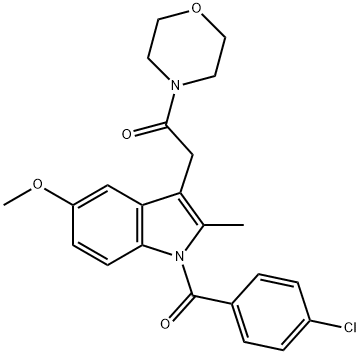
- Chemical Name:BML-190
- CAS:2854-32-2
- MF:C23H23ClN2O4
- Structure:
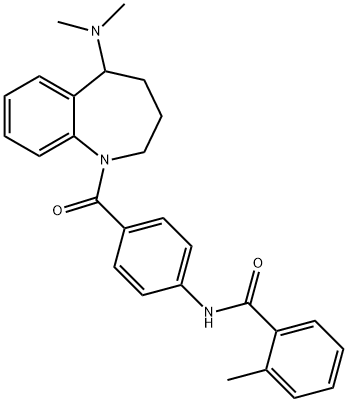
- Chemical Name:Mozavaptan
- CAS:137975-06-5
- MF:C27H29N3O2
- Structure:

- Chemical Name:GNF-2
- CAS:778270-11-4
- MF:C18H13F3N4O2
- Structure:
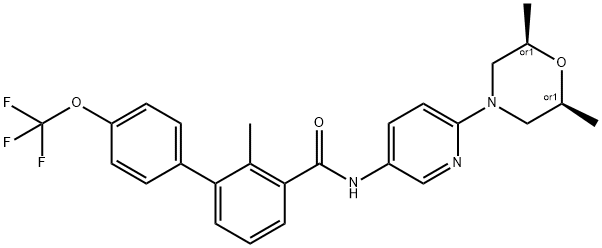
- Chemical Name:NVP-LDE225
- CAS:956697-53-3
- MF:C26H26F3N3O3
- Structure:
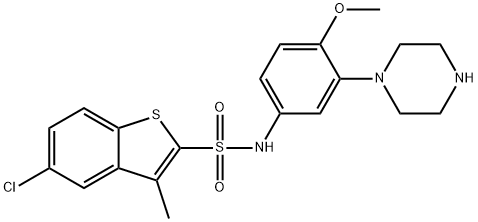
- Chemical Name:SB271046
- CAS:209481-20-9
- MF:C20H22ClN3O3S2
- Structure:
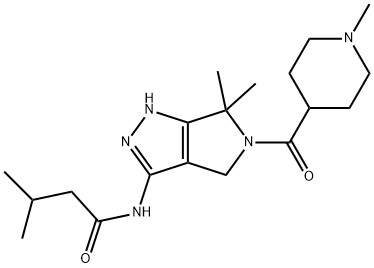
- Chemical Name:PHA-793887
- CAS:718630-59-2
- MF:C19H31N5O2
- Structure:
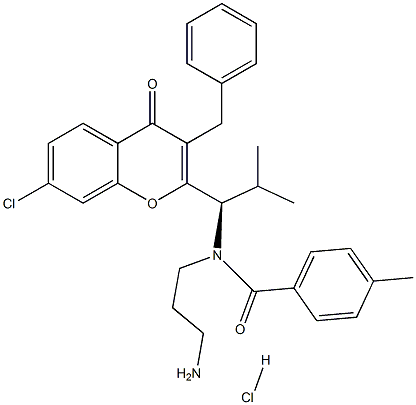
- Chemical Name:SB 743921
- CAS:940929-33-9
- MF:C31H34Cl2N2O3
- Structure:
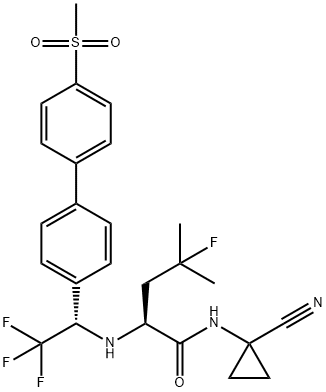
- Chemical Name:MK-0822
- CAS:603139-19-1
- MF:C25H27F4N3O3S
- Structure:
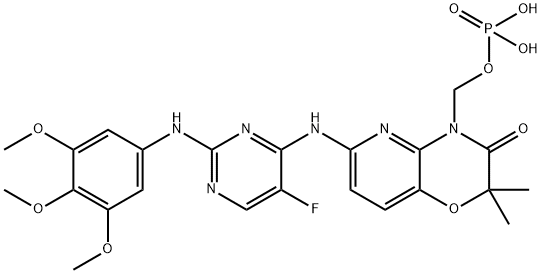
- Chemical Name:Fostamatinib
- CAS:901119-35-5
- MF:C23H26FN6O9P
- Structure:
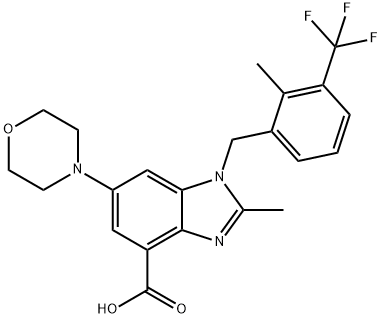
- Chemical Name:GSK2636771
- CAS:1372540-25-4
- MF:C22H22F3N3O3
- Structure:
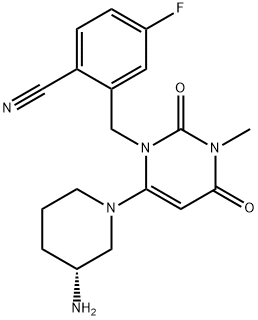
- Chemical Name:Trelagliptin
- CAS:865759-25-7
- MF:C18H20FN5O2
- Structure:
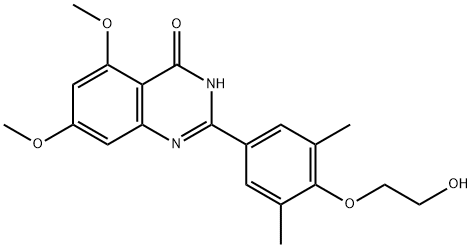
- Chemical Name:RVX-208
- CAS:1044870-39-4
- MF:C20H22N2O5
- Structure:
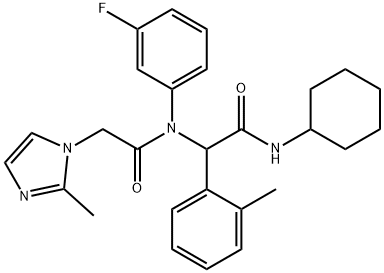
- Chemical Name:N-cyclohexyl-2-(N-(3-fluorophenyl)-2-(2-Methyl-1H-iMidazol-1-yl)acetaMido)-2-(o-tolyl)acetaMide
- CAS:1355326-35-0
- MF:C27H31FN4O2
- Structure:
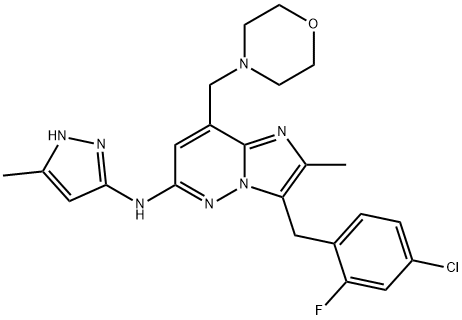
- Chemical Name:LY 2784544
- CAS:1229236-86-5
- MF:C23H25ClFN7O
- Structure:
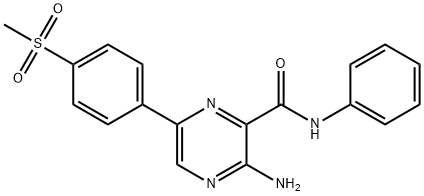
- Chemical Name:3-Amino-6-[4-(methylsulfonyl)phenyl]-N-phenyl-2-pyrazinecarboxamide
- CAS:1232410-49-9
- MF:C18H16N4O3S
- Structure:
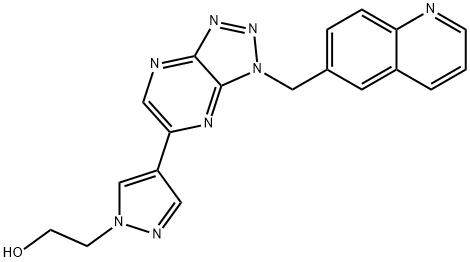
- Chemical Name:PD04217903
- CAS:956905-27-4
- MF:C19H16N8O
- Structure:
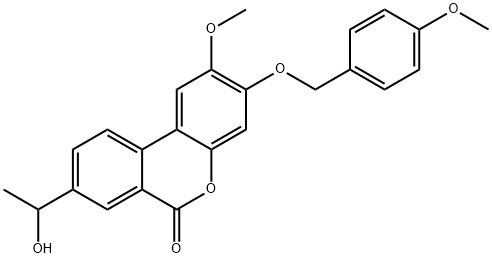
- Chemical Name:PaloMid 529 (P529)
- CAS:914913-88-5
- MF:C24H22O6
- Structure:
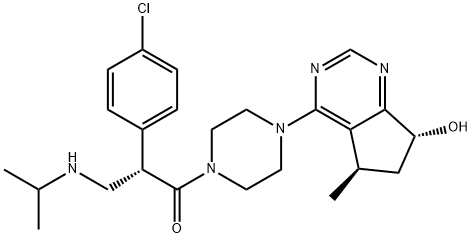
- Chemical Name:GDC-0068
- CAS:1001264-89-6
- MF:C24H32ClN5O2
- Structure:
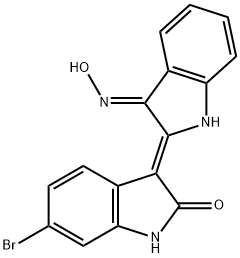
- Chemical Name:BIO
- CAS:667463-62-9
- MF:C16H10BrN3O2
- Structure:
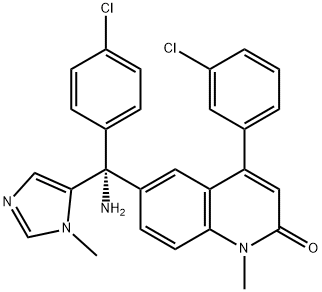
- Chemical Name:Tipifarnib
- CAS:192185-72-1
- MF:C27H22Cl2N4O
- Structure:
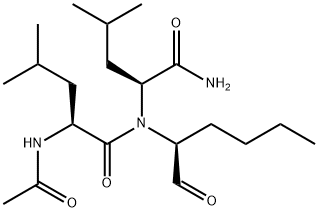
- Chemical Name:Calpain Inhibitor I
- CAS:110044-82-1
- MF:C20H37N3O4
- Structure:
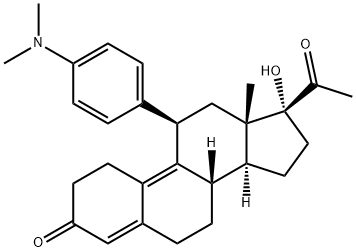
- Chemical Name:Ulipristal
- CAS:159811-51-5
- MF:C28H35NO3
- Structure:
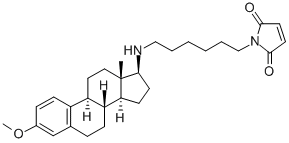
- Chemical Name:U-73122
- CAS:112648-68-7
- MF:C29H40N2O3
- Structure:
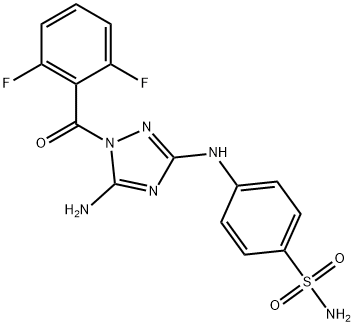
- Chemical Name:JNJ-7706621
- CAS:443797-96-4
- MF:C15H12F2N6O3S
- Structure:
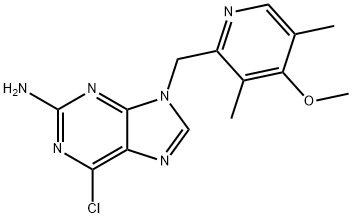
- Chemical Name:BIIB-021
- CAS:848695-25-0
- MF:C14H15ClN6O
- Structure:
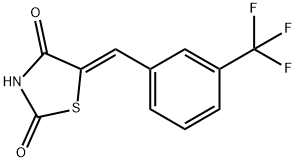
- Chemical Name:(5Z)-5-[[3-(Trifluoromethyl)phenyl]methylene]-2,4-thiazolidinedione
- CAS:438190-29-5
- MF:C11H6F3NO2S
- Structure:
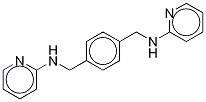
- Chemical Name:N1,N4-Di-2-pyridinyl-1,4-benzenedimethanamine
- CAS:55778-02-4
- MF:C18H18N4
- Structure:

- Chemical Name:(R)-1-(2-(2,5-dichlorobenzamido)acetamido)-3-methylbutylboronic acid
- CAS:1072833-77-2
- MF:C14H19BCl2N2O4
- Structure:
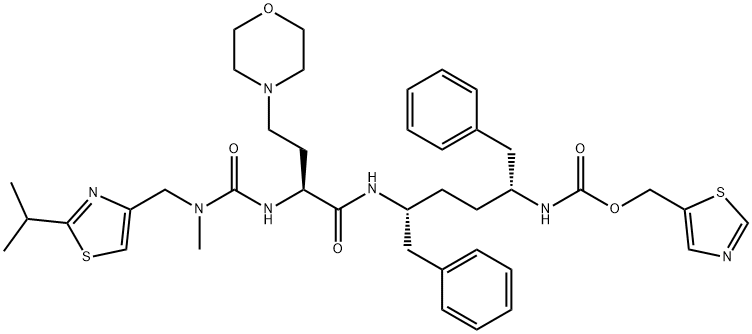
- Chemical Name:Cobicistat
- CAS:1004316-88-4
- MF:C40H53N7O5S2
- Structure:
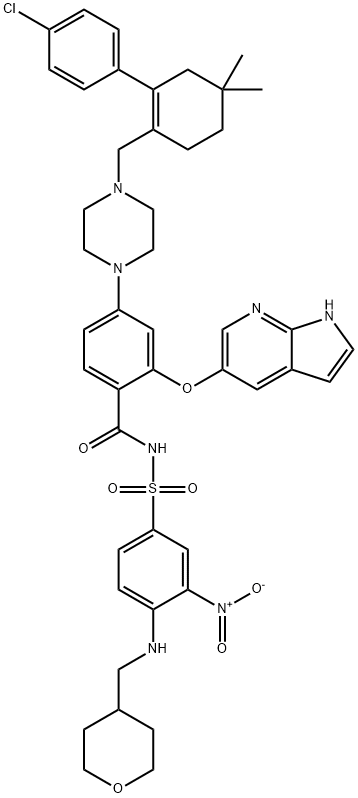
- Chemical Name:ABT-199
- CAS:1257044-40-8
- MF:C45H50ClN7O7S
- Structure:
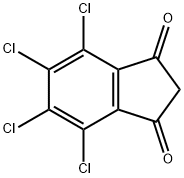
- Chemical Name:TCID
- CAS:30675-13-9
- MF:C9H2Cl4O2
- Structure:

- Chemical Name:Z-DEVD-FMK
- CAS:210344-95-9
- MF:C30H41FN4O12
- Structure:
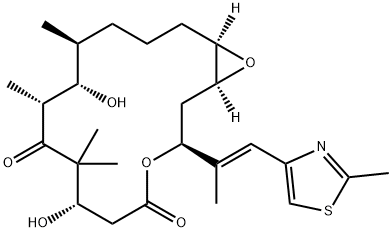
- Chemical Name:Epothilone A
- CAS:152044-53-6
- MF:C26H39NO6S
- Structure:
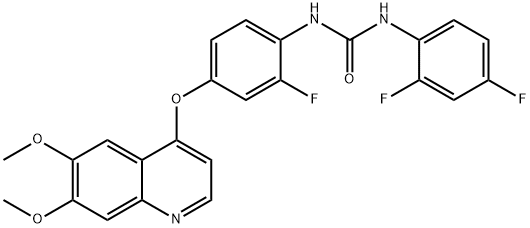
- Chemical Name:Ki8751
- CAS:228559-41-9
- MF:C24H18F3N3O4
- Structure:
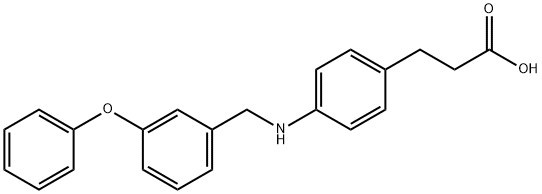
- Chemical Name:GW9508
- CAS:885101-89-3
- MF:C22H21NO3
- Structure:

- Chemical Name:PAC1
- CAS:315183-21-2
- MF:C23H28N4O2
- Structure:
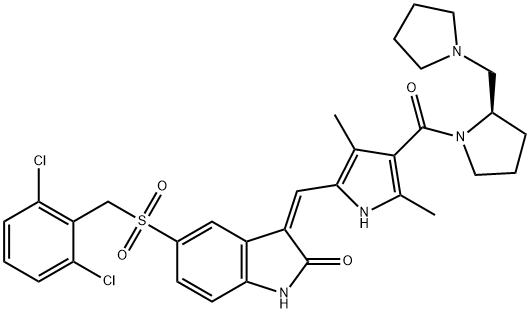
- Chemical Name:(2R)-1-[[5-[(Z)-[5-[[(2,6-DICHLOROPHENYL)METHYL]SULFONYL]-1,2-DIHYDRO-2-OXO-3H-INDOL-3-YLIDENE]METHYL]-2,4-DIMETHYL-1H-PYRROL-3-YL]CARBONYL]-2-(1-PYRROLIDINYLMETHYL)PYRROLIDINE
- CAS:477575-56-7
- MF:C32H34Cl2N4O4S
- Structure:
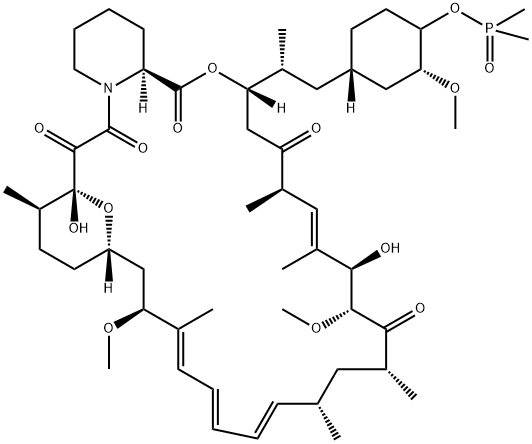
- Chemical Name:42-(Dimethylphosphinate)rapamycin
- CAS:572924-54-0
- MF:C53H84NO14P
- Structure:
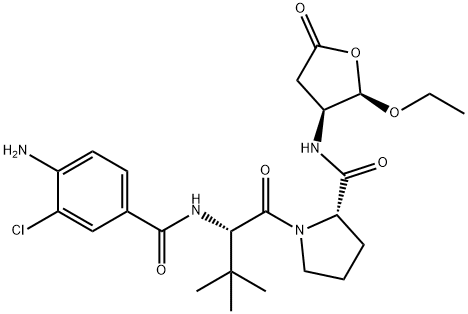
- Chemical Name:(S)-1-((S)-2-(4-amino-3-chlorobenzamido)-3,3-dimethylbutanoyl)-N-((2R,3S)-2-ethoxy-5-oxotetrahydrofuran-3-yl)pyrrolidine-2-carboxamide
- CAS:273404-37-8
- MF:C24H33ClN4O6
- Structure:
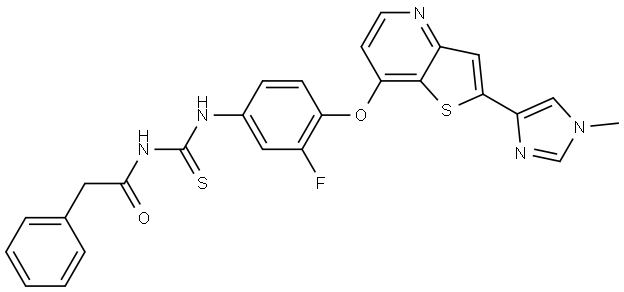
- Chemical Name:N-(3-fluoro-4-(2-(1-methyl-1H-imidazol-4-yl)thieno[3,2-b]pyridin-7-yloxy)phenylcarbamothioyl)-2-phenylacetamide
- CAS:875337-44-3
- MF:C26H20FN5O2S2
- Structure:
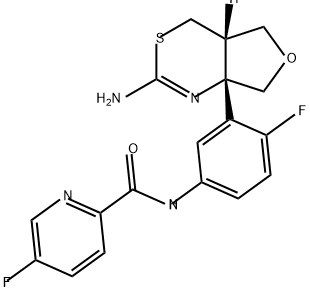
- Chemical Name:LY2886721
- CAS:1262036-50-9
- MF:C18H16F2N4O2S
- Structure:
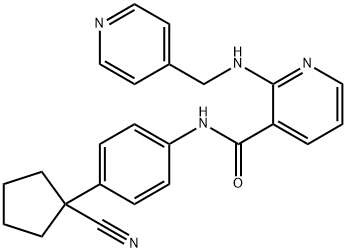
- Chemical Name:Apatinib
- CAS:811803-05-1
- MF:C24H23N5O
- Structure:
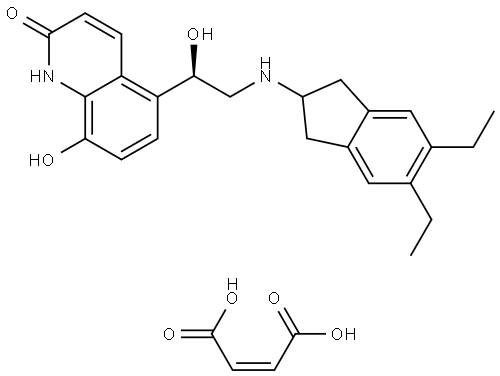
- Chemical Name:Indacaterol Maleate
- CAS:753498-25-8
- MF:C24H28N2O3.C4H4O4
- Structure:
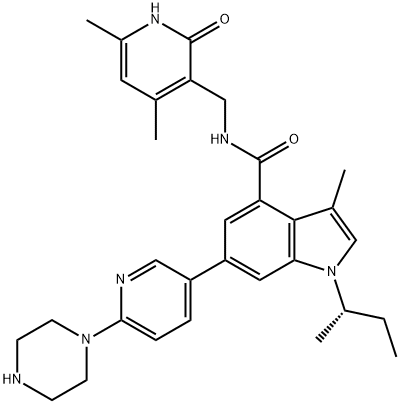
- Chemical Name:S)-1-(sec-butyl)-N-((4,6-diMethyl-2-oxo-1,2-dihydropyridin-3-yl)Methyl)-3-Methyl-6-(6-(piperazin-1-yl)pyridin-3-yl)-1H-indole-4-carboxaMide
- CAS:1346574-57-9
- MF:C31H38N6O2
- Structure:
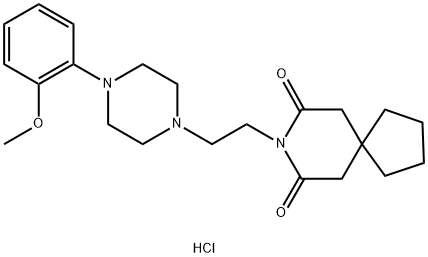
- Chemical Name:BMY 7378 DIHYDROCHLORIDE
- CAS:21102-95-4
- MF:C22H32ClN3O3
- Structure:
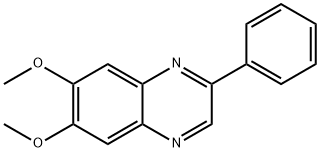
- Chemical Name:TYRPHOSTIN AG 1296
- CAS:146535-11-7
- MF:C16H14N2O2
- Structure:
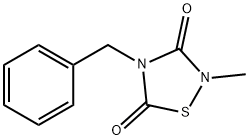
- Chemical Name:4-BENZYL-2-METHYL-1,2,4-THIADIAZOLIDINE-3,5-DIONE
- CAS:327036-89-5
- MF:C10H10N2O2S
- Structure:
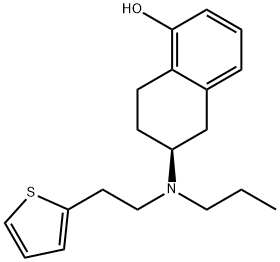
- Chemical Name:ROTIGOTINE
- CAS:99755-59-6
- MF:C19H25NOS
- Structure:

- Chemical Name:DAPIVIRINE,4-[[4-(2,4,6-TRIMETHYLPHENYL)AMINO]PYRIMIDIN-2-YL]AMINO]BENZONITRILE
- CAS:244767-67-7
- MF:C20H19N5
- Structure:
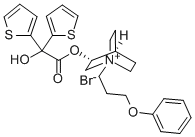
- Chemical Name:Aclidinium bromide
- CAS:320345-99-1
- MF:C13H10BrN
- Structure:
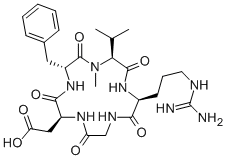
- Chemical Name:cilengitide
- CAS:188968-51-6
- MF:C27H40N8O7
- Structure:
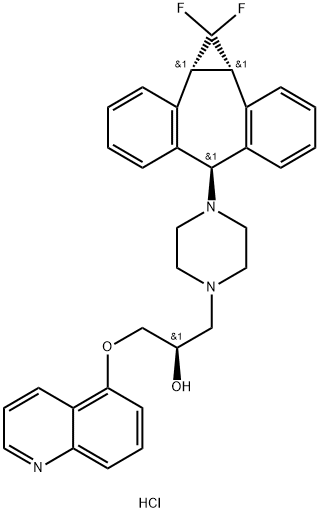
- Chemical Name:ZOSUQUIDAR TRIHYSROCHLORIDE
- CAS:167465-36-3
- MF:C32H32ClF2N3O2
- Structure:
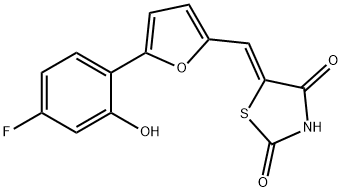
- Chemical Name:5-[[5-(4-Fluoro-2-hydroxyphenyl)-2-furanyl]methylene]-2,4-thiazolidinedione
- CAS:900515-16-4
- MF:C14H8FNO4S
- Structure:
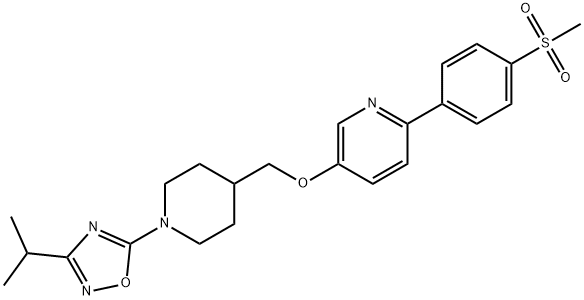
- Chemical Name:GSK1292263
- CAS:1032823-75-8
- MF:C23H28N4O4S
- Structure:
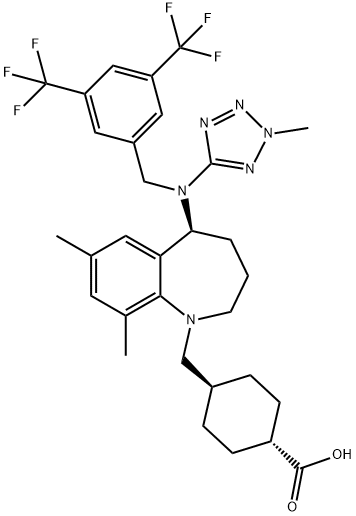
- Chemical Name:LY-2484595
- CAS:1186486-62-3
- MF:C31H36F6N6O2
- Structure:
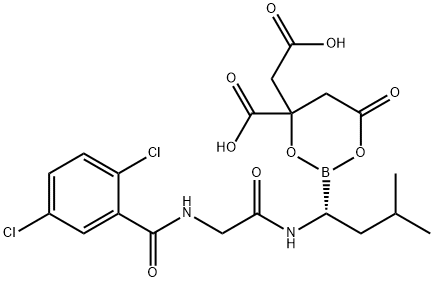
- Chemical Name:MLN9708
- CAS:1201902-80-8
- MF:C20H23BCl2N2O9
- Structure:
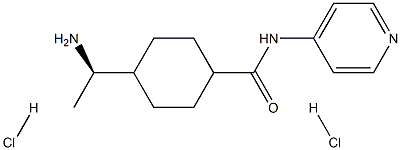
- Chemical Name:Y27632 (hydrochloride)
- CAS:129830-38-2
- MF:C14H23Cl2N3O
- Structure:
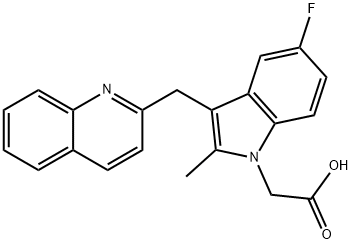
- Chemical Name:OC000459
- CAS:851723-84-7
- MF:C21H17FN2O2
- Structure:
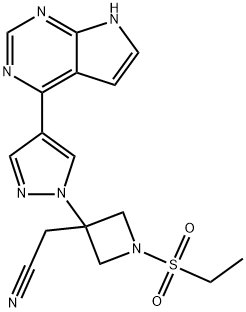
- Chemical Name:Baricitinib
- CAS:1187594-09-7
- MF:C16H17N7O2S
- Structure:
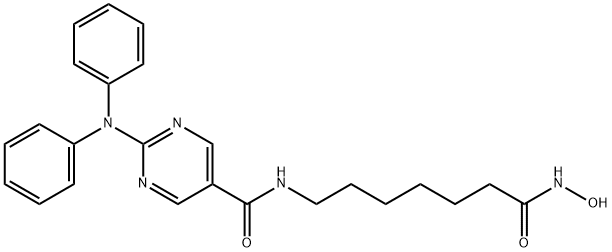
- Chemical Name:ACY-1215
- CAS:1316214-52-4
- MF:C24H27N5O3
- Structure:

- Chemical Name:PR-619
- CAS:2645-32-1
- MF:C7H5N5S2
- Structure:

- Chemical Name:2-(4-broMo-2-chlorophenoxy)-N-(4-(N-(4,6-diMethylpyriMidin-2-yl)sulfaMoyl)phenylcarbaMothioyl)acetaMide
- CAS:587841-73-4
- MF:C21H19BrClN5O4S2
- Structure:
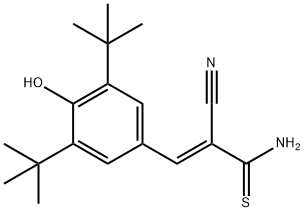
- Chemical Name:TYRPHOSTIN AG 879
- CAS:148741-30-4
- MF:C18H24N2OS
- Structure:
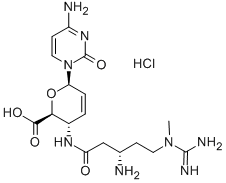
- Chemical Name:BLASTICIDIN S HYDROCHLORIDE
- CAS:3513-03-9
- MF:C17H27ClN8O5
- Structure:
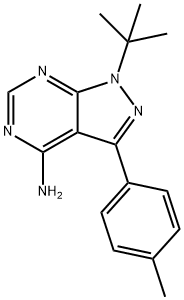
- Chemical Name:PP1
- CAS:172889-26-8
- MF:C16H19N5
- Structure:
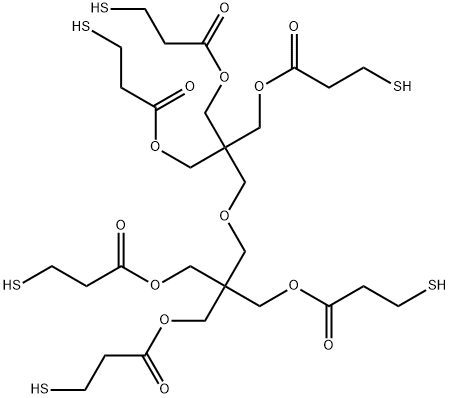
- Chemical Name:DIPENTAERYTHRITOL HEXAKIS(3-MERCAPTOPROPIONATE)
- CAS:25359-71-1
- MF:C28H46O13S6
- Chemical Name:Dexmedetomidine
- CAS:
- MF:C13H16N2
- Structure:
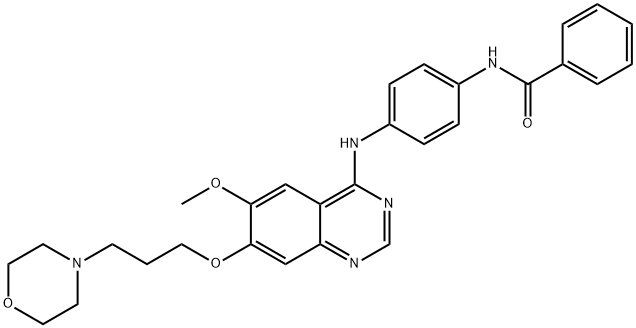
- Chemical Name:ZM 447439
- CAS:331771-20-1
- MF:C29H31N5O4
- Structure:
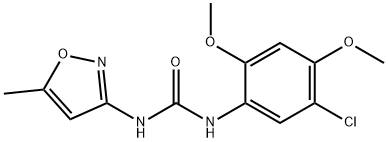
- Chemical Name:N-(5-CHLORO-2,4-DIMETHOXYPHENYL)-N'-(5-METHYL-3-ISOXAZOLYL)-UREA
- CAS:501925-31-1
- MF:C13H14ClN3O4
- Structure:
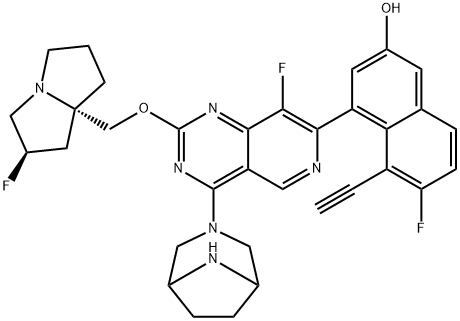
- Chemical Name:MRTX1133
- CAS:2621928-55-8
- MF:C33H31F3N6O2
- Structure:

- Chemical Name:PJ-34
- CAS:344458-15-7
- MF:C17H17N3O2HCl
- Chemical Name:GSK3685032
- CAS:
- MF:
- Structure:
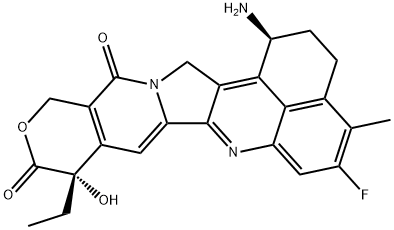
- Chemical Name:Exatecan
- CAS:171335-80-1
- MF:C24H22FN3O4
- Structure:
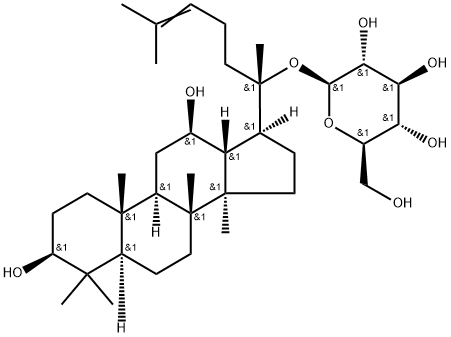
- Chemical Name:Ginsenoside CK
- CAS:39262-14-1
- MF:C36H62O8
- Structure:
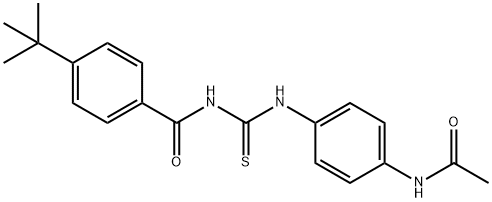
- Chemical Name:TENOVIN-1
- CAS:380315-80-0
- MF:C20H23N3O2S
- Structure:

- Chemical Name:BX-912
- CAS:702674-56-4
- MF:C20H23BrN8O
- Structure:
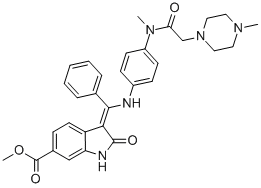
- Chemical Name:BIBF-1120
- CAS:928326-83-4
- MF:C31H33N5O4
- Structure:
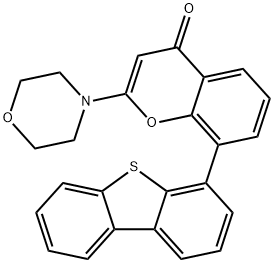
- Chemical Name:KU57788(NU7441)
- CAS:503468-95-9
- MF:C25H19NO3S
- Structure:
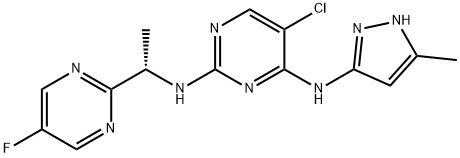
- Chemical Name:AZD 1480
- CAS:935666-88-9
- MF:C14H14ClFN8
- Structure:
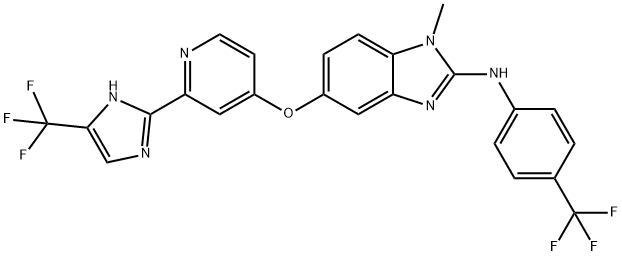
- Chemical Name:RAF265(CHIR-265)
- CAS:927880-90-8
- MF:C24H16F6N6O
- Structure:
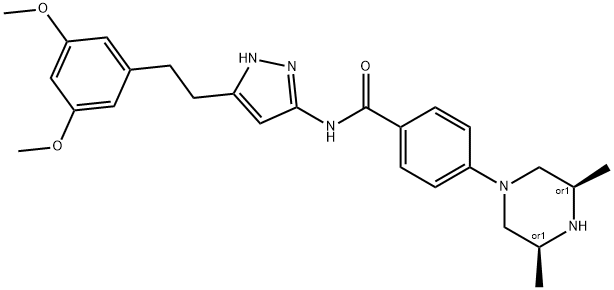
- Chemical Name:AZD-4547
- CAS:1035270-39-3
- MF:C26H33N5O3
- Structure:
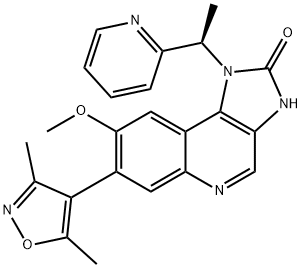
- Chemical Name:I-BET151 (GSK1210151A)
- CAS:1300031-49-5
- MF:C23H21N5O3
- Structure:
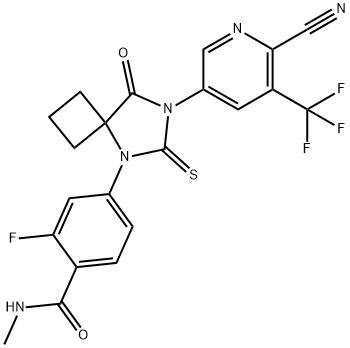
- Chemical Name:Apalutamide
- CAS:956104-40-8
- MF:C21H15F4N5O2S
- Structure:
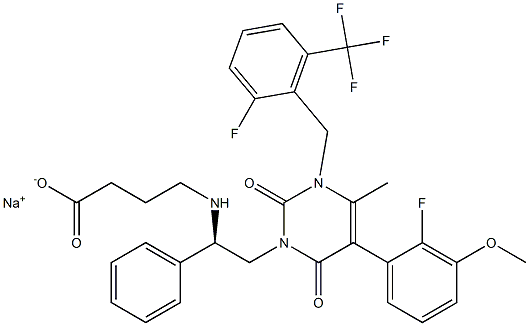
- Chemical Name:Elagolix Sodium
- CAS:832720-36-2
- MF:C32H29F5N3NaO5
- Structure:
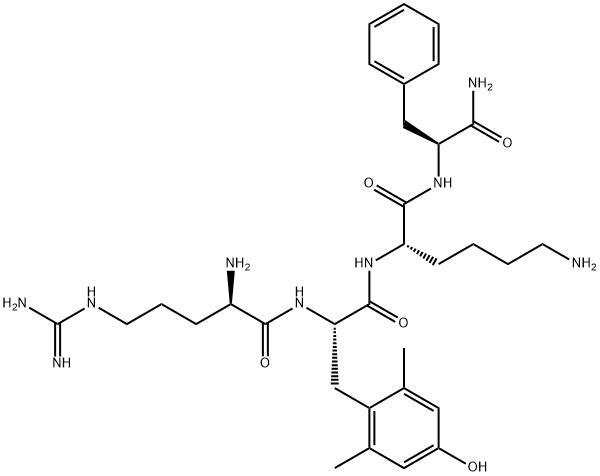
- Chemical Name:Elamipretide
- CAS:736992-21-5
- MF:C32H49N9O5
- Structure:
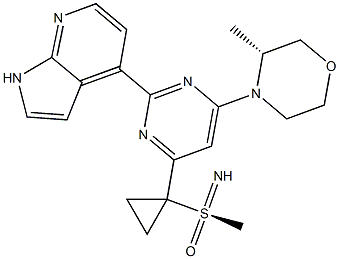
- Chemical Name:AZD6738
- CAS:1352226-88-0
- MF:C20H24N6O2S
- Structure:
- Chemical Name:IFENPRODIL HEMITARTRATE
- CAS:23210-58-4
- MF:C25H33NO8
- Chemical Name:PARATHYROID HORMONE (1-34), BOVINE
- CAS:12583-68-5
- MF:C183H288N54O50S2
- Structure:
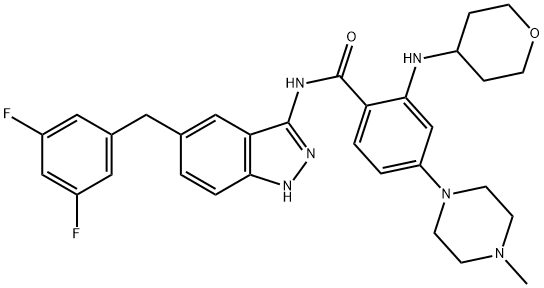
- Chemical Name:Entrectinib
- CAS:1108743-60-7
- MF:C31H34F2N6O2
- Structure:
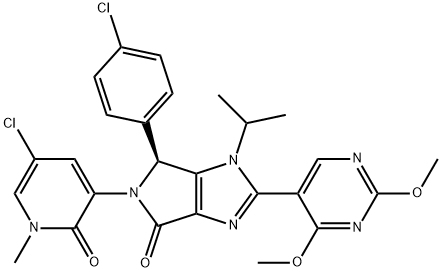
- Chemical Name:Siremadlin
- CAS:1448867-41-1
- MF:C26H24Cl2N6O4
- Chemical Name:R-228060
- CAS:561069-23-6
- MF:
- Structure:
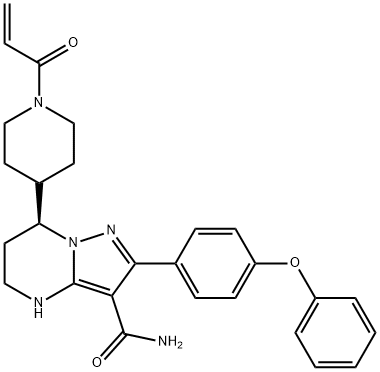
- Chemical Name:Zanubrutinib
- CAS:1691249-45-2
- MF:C27H29N5O3
- Structure:
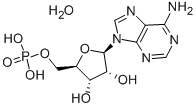
- Chemical Name:Adenosine 5'-monophosphate monohydrate
- CAS:18422-05-4
- MF:C10H16N5O8P
- Structure:

- Chemical Name:4-Butylresorcinol
- CAS:18979-61-8
- MF:C10H14O2
- Structure:
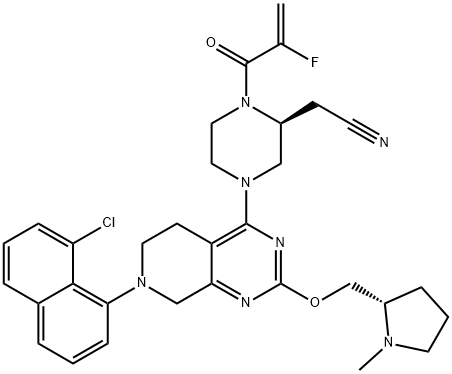
- Chemical Name:MRTX-849
- CAS:2326521-71-3
- MF:C32H35ClFN7O2
- Structure:
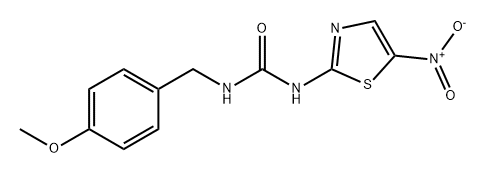
- Chemical Name:AR-A014418
- CAS:487021-52-3
- MF:C12H12N4O4S
- Structure:
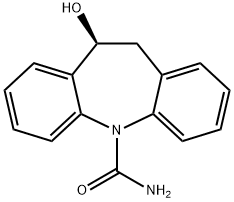
- Chemical Name:Eslicarbazepine
- CAS:104746-04-5
- MF:C15H14N2O2
- Structure:
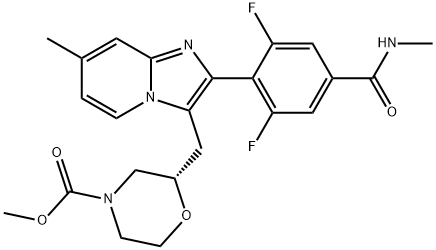
- Chemical Name:4-Morpholinecarboxylic acid, 2-[[2-[2,6-difluoro-4-[(methylamino)carbonyl]phenyl]-7-methylimidazo[1,2-a]pyridin-3-yl]methyl]-, methyl ester, (2S)-
- CAS:1621164-74-6
- MF:C23H24F2N4O4
- Structure:
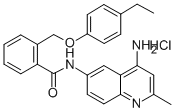
- Chemical Name:JTC 801
- CAS:244218-51-7
- MF:C26H25N3O2.ClH
- Structure:
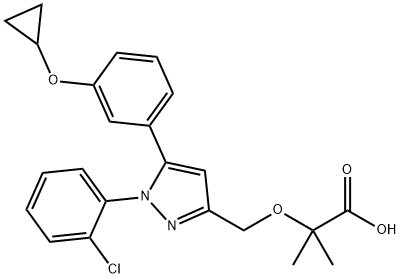
- Chemical Name:VB124
- CAS:2230186-18-0
- MF:C23H23ClN2O4